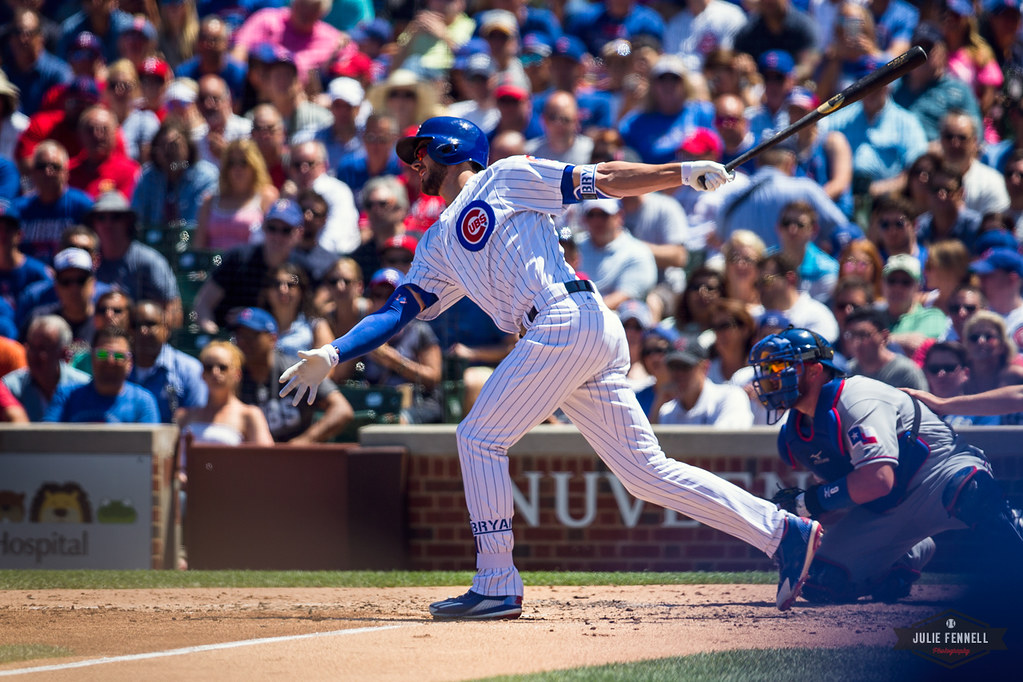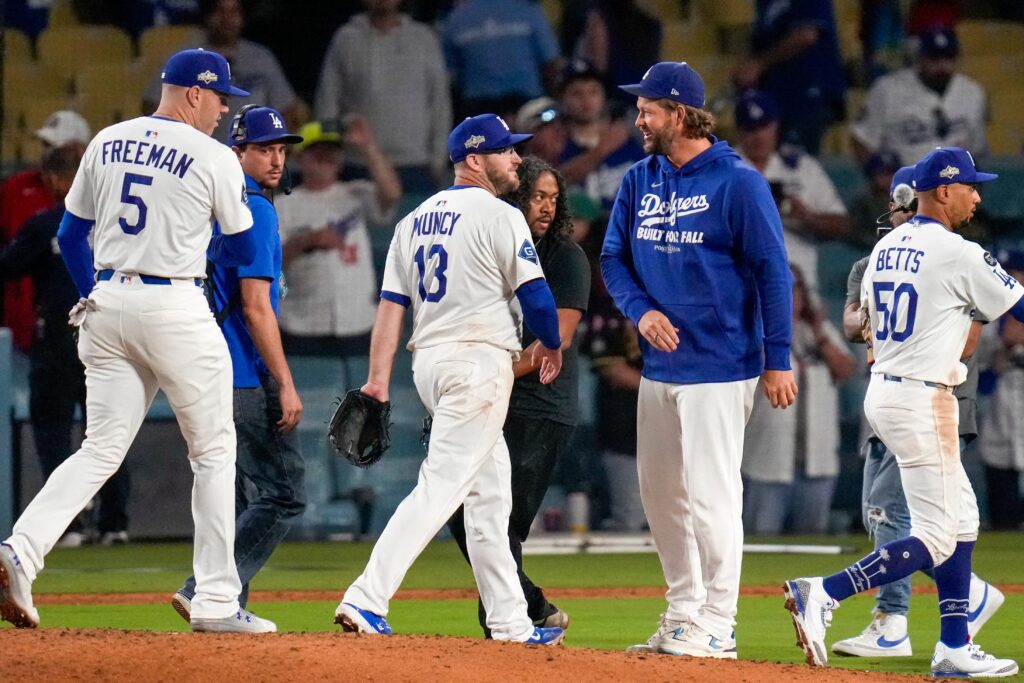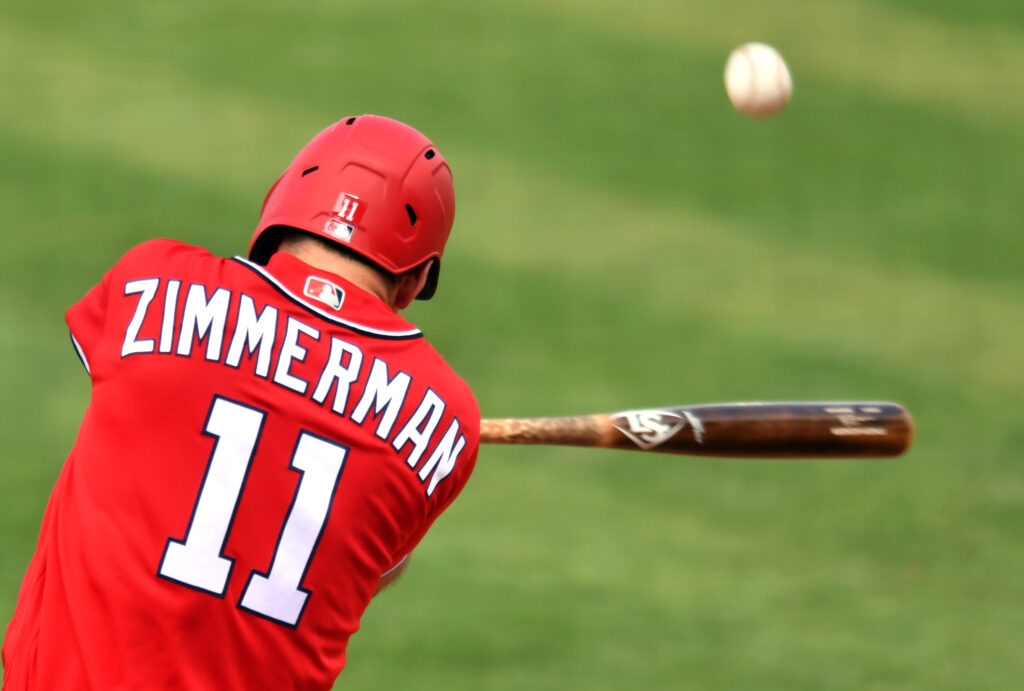This is the second article in a series that looks at the five best players at each position for the Chicago Cubs. In this installment, first and third basemen.
The lists of the best first and third basemen in Chicago Cubs is littered with slick fielders and productive hitters. Among those on the list are a pair of players from the 2016 championship team, along with two first basemen who were also managers of the team and arguably the greatest player of the 19th century.
The Best Corner Infielders in Chicago Cubs History
First Basemen
Honorable Mentions – Derrek Lee was a power hitter and a slick fielder during his seven-year stint in Chicago. He was a two-time All-Star who won two gold gloves and a silver slugger award while playing on two Cubs playoff teams. Lee finished third in the MVP voting in 2005 after leading the league with a .335 average, 199 hits, and 50 doubles, to go along with career-high totals of 120 doubles and 46 home runs as well as 107 RBIs. Despite missing time in 2006 with two broken bones in his wrist, Lee had five seasons where he amassed at least 90 runs, 160 hits, 30 doubles, 20 home runs, and 80 runs batted in. He hit .298 with 1,046 hits, 179 homers, and 574 RBIs in 924 games.
Before he led the Cubs to three World Series appearances as a manager, Charlie Grimm was a productive hitter who was arguably the best fielding first basemen of the 1920s. After stints with the Athletics, Cardinals, and Pirates, he came to the Cubs in 1925 and spent 12 years with Chicago, reaching 150 hits five times and driving in at least 80 runs three times. Grimm batted .296 with 1,454 hits, 61 home runs, and 696 RBIs in 1,334 games.
Phil Cavarretta followed Grimm and gave the Cubs another stellar defender at first base for 11 of his 20 seasons (he also played all three outfield positions during his tenure, which lasted from 1934-53). Cavarretta led the league with 197 hits and added 106 runs in 1944, then followed that up with his best season. He won the National League MVP award in 1945 after hitting a league-best .355, to go with 94 runs, 177 hits, and a career-high 97 runs batted in. Cavarretta hit .292 with the Cubs and ranks fifth in franchise history in triples (99), sixth in games (1,953), and tenth in runs (968), hits (1,927), and RBIs (896). He had 20 hits in 17 World Series games and hit a home run and drove in five runs in a seven-game loss to the Tigers in 1945. Cavarretta retired in 1955 and spent the next 25 years as a scout, coach, and minor league manager.
5. Anthony Rizzo – After one season with the Padres, he joined the Cubs in 2012. Rizzo hit 30 or more home runs four times and drove in 100 runs four straight seasons. He was a three-time All-Star, a four-time gold glove winner in his ten seasons with Chicago, also earning the silver slugger award in 2016. Rizzo was even better in the playoffs, hitting two home runs against the Dodgers in the National League Championship Series, then amassing seven runs scored, nine hits, one homer, and five RBIs to help the Cubs beat the Indians in the World Series. Overall, Rizzo hit .272 with 721 runs, 1,311 hits, 784 RBIs, and 242 home runs, a total that ranks sixth in franchise history. He was sent to the Yankees at the 2021 trade deadline.
4. Frank Chance – During his playing career, Chance was not a fan of sportsmanship. He ran into and over opposing players on the base paths, got in several fights, and threw beer bottles at fans. He was also extremely strict as a manager and would release players for not following his instructions. However, there is no doubting Chance’s abilities as a player. He had a knack for getting on base and, once that happened, coming around to score. “Husk” had uncommon speed for a first baseman, leading the league in stolen bases twice and amassing a team-record 402 steals in 15 seasons (1898-1912). The two-time champion batted .297 with 795 runs, 1,269 hits, and 590 RBIs in 1,275 games. However, the final four years of his Cubs tenure saw his play decline sharply due to hearing loss and blood clots in his brain, the result of him crowding the plate and getting hit by a pitch 137 times. Chance passed away in 1924 and was inducted into the Baseball Hall of Fame in 1946.
3. Ernie Banks – Despite being known for his time as a shortstop, the Hall of Famer actually spent more time at first base (1,259 games to 1,125). Banks won two MVP awards, was a nine-time All-Star, and earned a gold glove, but his range diminished in the early 1960s, so he was moved across the diamond. In 10 seasons at his new position, Banks was a five-time All-Star who hit 20 home runs and drove in 80 runs six times. “Mr. Cub” totaled 1,228 hits, 214 homers, and 778 RBIs in 1,312 games during that time before retiring in 1971.
2. Mark Grace – He was yet another in a long line of stellar fielding first basement for the Cubs. A solid contact hitter, Grace earned three All-Star selections and four gold gloves in 13 years with Chicago (1988-2000). He had 160 or more hits 10 times in the Windy City and hit better than .300 in nine seasons. Overall, Grace hit .308 with the Cubs and ranks second in team history in doubles (456, including 51 in 1995), fifth in hits (2,201), seventh in total bases (3,187), eighth in RBIs (1,004) and ninth in games (1,910) and runs (1,057).
1. Adrian “Cap” Anson – Although his role in keeping black players out of the major leagues dropped him in the manager’s ranking, it did not as a player. Anson actually played third base in the National Association and the early years of the National League before moving across the infield in the late 1870s. He spent 22 seasons as a player-coach with the White Stockings and was arguably the greatest player of the 19th century. Anson hit over .300 an amazing 19 times, led the league in hitting in four seasons, including 1881, when he hit .399 (which is the second-best single-season mark in team history to Ross Barnes, who hit .429 in 1876). He topped the National League in doubles twice, hits once, and RBIs eight times, with a high of 147 in 1886. He is credited with perfecting the hit-and-run, and he also earned five fielding titles.
Anson is the all-time franchise leader in hits (3,012), runs scored (1,722), doubles (529), and runs batted in (1,880), and he ranks second in games (2,277) and triples (124), third in total bases (4,080), tied for third in average (.331) and tenth in stolen bases (247), despite the statistic not being kept for his first 10 seasons. He was also the first player in Major League history to reach 3,000 hits and, counting his time in the National Association, he ended his career with 3,435. Although he had a reputation as a disciplinarian, Anson earned his nickname when his teammates named him as the franchise’s first captain. The fans were so distraught after he was let go as both player and manager in 1897 that the team became known as the Orphans. Anson had failed forays into business and politics before his death in 1922. He was inducted into the Baseball Hall of Fame in 1939.
Third Basemen
Honorable Mention – Trivia time! Who held the Major League single-season home run record before Babe Ruth hit 29 in 1919? How many guesses would it take (with “internet cheating,” of course) for you to come up with Chicago’s Edward “Ned” Williamson? He had the benefit of playing at Lake Park, with a right field fence that was a reported 230 feet from home plate. If that wasn’t strange enough, teams in that era were allowed to set their own ground rules. In 1883, the White Stockings said that any ball hit over the short fence would be considered a ground-rule double, and Williamson led the league with 49. The following year, club management, seeing how good their players were in navigating the short side of the field, decided to change the rule to make balls hit over the fence a home run. Williamson dropped to 18 doubles, but his home runs jumped from two to a league-leading 27 (he never reached double-digits other than in 1884). The White Stockings moved into West Side Park (which had normal foul line distances but was spacious in center field to say the least). In 11 seasons in Chicago (1879-89), he was a member of five pennant-winning teams and totaled 744 runs scored, 1,050 hits, and 622 RBIs in 1,065 games.
5. Tom Burns – He started as a shortstop and utility infielder before replacing Williamson in 1886. Burns was a solid fielder in an era without adequate gloves, and he was a good contact hitter, having more hits than games played in eight of his 12 seasons with Chicago (1880-91). The five-time National League champion amassed 715 runs, 1,299 hits, 679 RBIs, and 161 stolen bases in 1,239 games.
4. Kris Bryant – He began his career as the National League’s Rookie of the Year after hitting .275 with 26 home runs and 99 RBIs in 2015. Everything came together in his second season as well. Bryant hit .292 with career highs in runs scored (a league-leading 121), hits (176), homers (39), and runs batted in (102) and won the MVP award. He followed that by hitting three home runs and driving in eight runs in the playoffs to help the Cubs with the World Series. During his seven-year tenure in Chicago, Bryant had 564 runs, 865 hits, 160 homers, and 465 RBIs in 833 games. The four-time All-Star was sent to the Giants at the trade deadline in 2021.
3. Aramis Ramirez – He was a clutch hitter who helped the Cubs get to the playoffs three times in his nine-year tenure (2003-11). Ramirez was a two-time All-Star who hit 20 or more home runs seven times and drove in 100 runs four times with Chicago. His 239 homers in a Cubs uniform rank seventh in franchise history, and he also batted .294 and had 1,246 hits and 806 RBIs in 1,124 games. Ramirez had four home runs and 10 RBIs in the 2003 playoffs, but the Cubs fell to the Marlins in the National League Championship Series.
2. Stan Hack – He certainly was no hack as a player, having been a contributor to four pennant-winning teams during his 16-year career (1932-47). Hack was a stellar leadoff hitter who walked more than twice as many times as he struck out. He was also an excellent fielder who led the league in hits twice and stolen bases twice. Hack was a five-time All-Star who scored 100 or more runs in six straight seasons (1936-41), had more than 150 hits nine times, and hit over .300 six times. He batted .301 and drove in 642 runs in his career, and he also ranks sixth in team history in hits (2,193), seventh in games (1,936), runs (1,239), and doubles (363), ninth in triples (81) and tenth in total bases (2,889). Hack hit .348 with 24 hits and five RBIs in 18 World Series games, but the Cubs lost all four times.
1. Ron Santo – He spent his entire 15-year career in Chicago with 14 of those seasons coming with the Cubs (1960-73). Santo showed he was a star both on offense and defense, earning nine All-Star selections and five gold glove awards. He smashed 20 or more home runs and drove in at least 80 runs 11 times each, scored 80 or more runs eight times, and had 150 or more hits in seven seasons. Santo led the league in walks four times and topped the National League with 13 triples in 1964. He ranks fourth in franchise history in home runs (337), fifth in games (2,126) and runs batted in (1,290), sixth in total bases (3,667), seventh in hits (2,171) eighth in runs scored (1,109) and ninth in doubles (353).
Santo was known for his hustle and many people did not find out the reason for this until after his career ended. He suffered from diabetes, which he found out about while he was in high school and kept a secret from coaches, teammates, and the media for most of his career. After one season with the White Sox, Santo retired in 1974 and kept busy after his playing career by working as a broadcaster and owning several successful businesses. However, his condition worsened, with Santo having both legs amputated below the knee, having heart bypass surgery, and becoming stricken with bladder cancer. He spent his later years fundraising for the Juvenile Diabetes Research Foundation and starting his own organization to help increase awareness for diabetic alert dogs. Santo passed away in 2010 and overwhelming public support finally got him inducted into the Baseball Hall of Fame two years later.
Upcoming Stories
Chicago Cubs Catchers and Managers
Chicago Cubs Second Basemen and Shortstops – coming soon
Chicago Cubs Outfielders – coming soon
Chicago Cubs Pitchers – coming soon
Previous Series
A look back at the Boston Red Sox
Boston Red Sox Catchers and Managers
Boston Red Sox First and Third Basemen
Boston Red Sox Second Basemen and Shortstops
Boston Red Sox Outfielders and Designated Hitters
Boston Red Sox Pitchers
A look back at the Baltimore Orioles
Baltimore Orioles Catchers and Managers
Baltimore Orioles First and Third Basemen
Baltimore Orioles Second Basemen and Shortstops
Baltimore Orioles Outfielders and Designated Hitters
Baltimore Orioles Pitchers
A look back at the Atlanta Braves
Catchers and Managers
First and Third Basemen
Second Basemen and Shortstops
Outfielders
Pitchers
A look back at the Arizona Diamondbacks
Catchers and Managers
First and Third Basemen
Second Basemen and Shortstops
Outfielders
Pitchers



